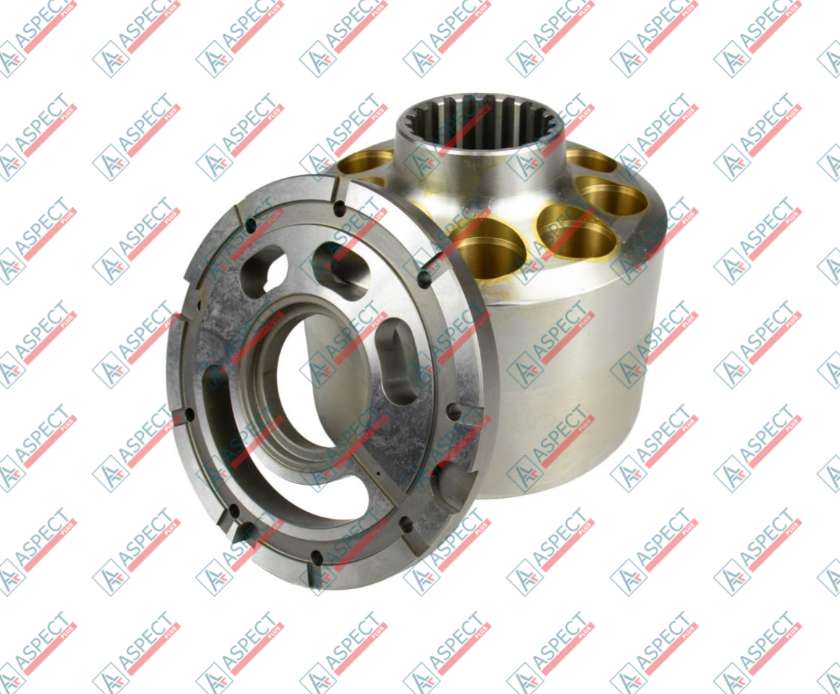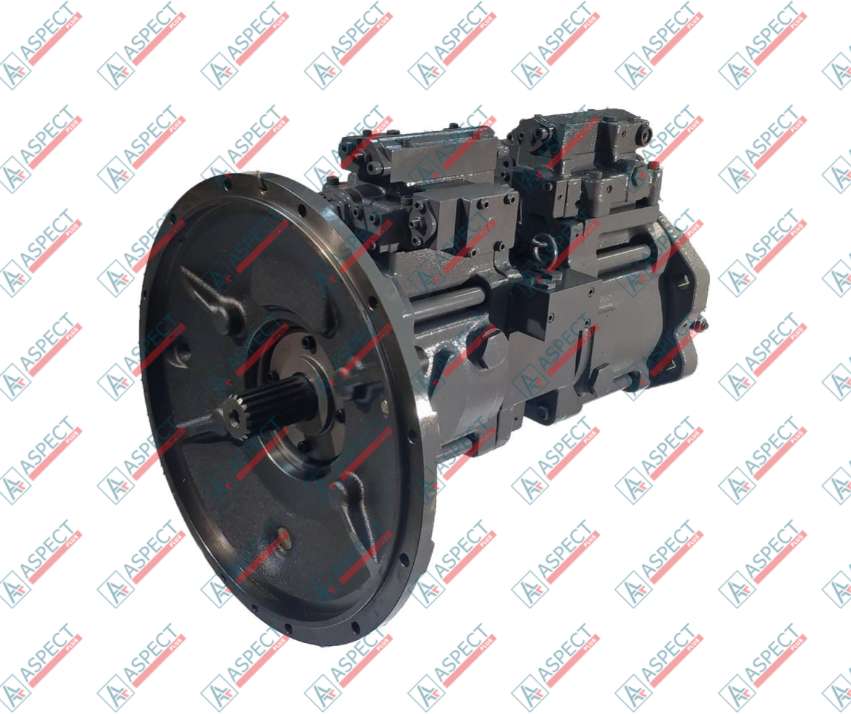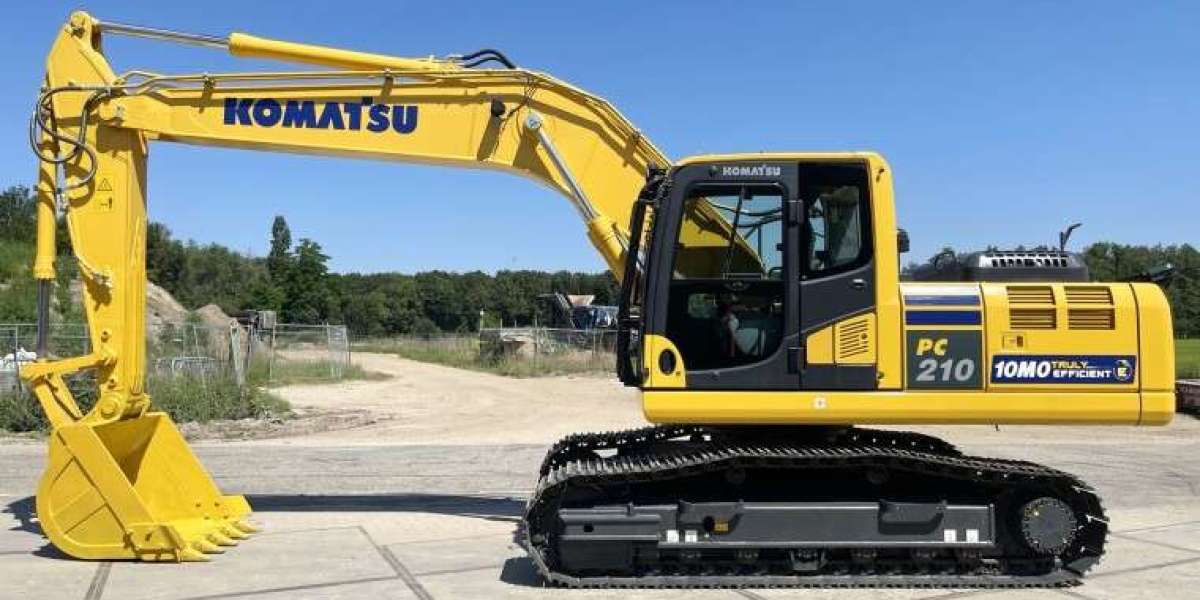The hydraulic system is the powerhouse of any Komatsu excavator, providing the immense force and precise control necessary for heavy construction and mining tasks. A properly functioning hydraulic system is characterized by consistent pressure and smooth, responsive movements. However, when an operator notices a drop in power, slow functions, or a loss of lifting capacity, the most likely culprit is a hydraulic pressure drop. This is a serious issue that, if left unaddressed, can lead to catastrophic component failure, expensive downtime, and compromised safety. This article will serve as a comprehensive diagnostic guide for Komatsu excavator hydraulics, focusing on the common causes of hydraulic pressure drop Komatsu. Our main idea is to provide a structured approach to troubleshooting, helping mechanics and operators pinpoint the root cause of the problem and understand the importance of using quality parts for repair to restore system performance and ensure the longevity of the equipment.
Signs of Hydraulic Pressure Drop in Komatsu Excavators
The signs of a hydraulic pressure drop are often clear and directly impact the machine’s performance. An operator might notice:
- Sluggish or Slow Functions: The excavator's arm, bucket, or swing mechanism moves noticeably slower than usual, especially under load.
- Inability to Lift a Load: The machine struggles or fails to lift an object that it should normally handle with ease.
- "Drifting" or "Trembling" Cylinders: Hydraulic cylinders may not hold their position and slowly retract or extend on their own. The arm may also appear to "tremble" when holding a load.
- Weak Digging Power: The digging force of the bucket is significantly reduced.
These symptoms are clear indicators that the hydraulic system pressure has been compromised.

Potential Causes of Pressure Drop: A Component-Based View
A drop in pressure is a symptom, not a cause. A systematic approach to Komatsu hydraulic diagnostics is needed to identify the root problem. Potential causes can be classified by the affected component or system:
1. The Hydraulic Pump (Main Pump Komatsu PC)
The hydraulic pump is the most common source of pressure loss. Over time, internal components wear out, leading to internal leakage.
- Worn Pump Components: Scored piston shoes, a worn swash plate, or damaged valve plates can cause fluid to leak internally, reducing the pump's output and pressure.
- Faulty Pressure Regulator: A malfunctioning pressure regulator on the main pump Komatsu PC may fail to maintain the desired system pressure.
- Pilot Pressure Circuit Issues: The pilot pressure circuit controls the main hydraulic flow. A leak or a faulty pilot pump can lead to a drop in main system pressure.

2. The Hydraulic Control Valve Block
This is a central component that directs hydraulic fluid to different functions. Its internal integrity is crucial for maintaining pressure.
- Worn Spools: The spools within the valve block direct fluid flow. If their seals wear out or the spools themselves become scored, fluid will leak internally, causing a pressure drop.
- Faulty Relief Valves: Komatsu hydraulic systems use relief valves to protect the system from excessive pressure. If a relief valve becomes stuck open, pressure will be lost to the tank.
3. Hydraulic Cylinders and Motors
Internal leakage in the actuators themselves can also be a cause of a pressure drop, especially if the problem is specific to one function.
- Worn Piston Seals: A key cause of a hydraulic cylinder leak. If the seals on the piston are worn, fluid can bypass the piston, preventing the cylinder from holding its position or exerting full force.
- Worn Motor Components: For travel or swing motors, internal wear can lead to fluid bypassing the motor, resulting in a loss of power and speed.
4. Other Contributing Factors
- Low or Contaminated Hydraulic Oil: An insufficient amount of hydraulic oil can cause cavitation and lead to a pressure drop. Hydraulic fluid contamination from dirt or water can accelerate component wear, which in turn causes pressure loss.
- Clogged Filters: A severely clogged hydraulic filter restricts fluid flow, putting a strain on the pump and reducing system performance.
- Damaged Hoses and Lines: A ruptured hose or a cracked fitting allows fluid to leak externally, resulting in a loss of pressure.
A Step-by-Step Diagnostic Guide
A systematic approach is key to effective Komatsu hydraulic diagnostics.
- Visual Inspection: Start with a thorough visual check. Look for external leaks, damaged hoses, or loose connections. Check the hydraulic fluid level and for any visible signs of contamination.
- Pressure Testing: This is the most crucial step. Use a hydraulic pressure gauge to check the pressure at various points in the system. Start by testing the pressure at the main pump Komatsu PC outlet and then at individual valve ports to isolate the faulty component.
- Flow Rate Testing: Measure the flow rate of the hydraulic fluid. A flow rate that is lower than the manufacturer's specification can confirm internal pump or valve wear.
- Oil Analysis: For a more in-depth diagnosis, a lab analysis of the hydraulic oil can reveal contamination and wear metals, providing a definitive answer about the root cause of the problem.
The Importance of Quality Parts for Repair
When a component is identified as the source of the pressure drop, the choice of spare parts for repair is paramount. Using genuine Komatsu parts or high-quality analogues is essential. Inferior parts may not meet the precise specifications for pressure and flow, leading to an immediate return of the problem and further damage to the system. This is why investing in quality parts is not an expense but a critical step in restoring system performance and ensuring the longevity of your heavy equipment.
Our company Aspect Plus offers a wide range of genuine Komatsu parts, from hydraulic pumps and valves to hydraulic seals and gaskets, to help you effectively diagnose and fix pressure drop issues.
Conclusion
A hydraulic pressure drop is a critical warning sign that your Komatsu excavator hydraulics are in trouble. By understanding the common causes and implementing a systematic approach to diagnostics, you can quickly and accurately pinpoint the source of the problem. A commitment to professional repair and the use of quality spare parts is the most effective strategy for restoring system performance, preventing future damage, and ensuring the continued reliability and safety of your machine.
For expert troubleshooting and a reliable source for genuine Komatsu parts, contact the specialists at Aspect Plus. We are here to help your Komatsu excavator run smoothly and efficiently.



